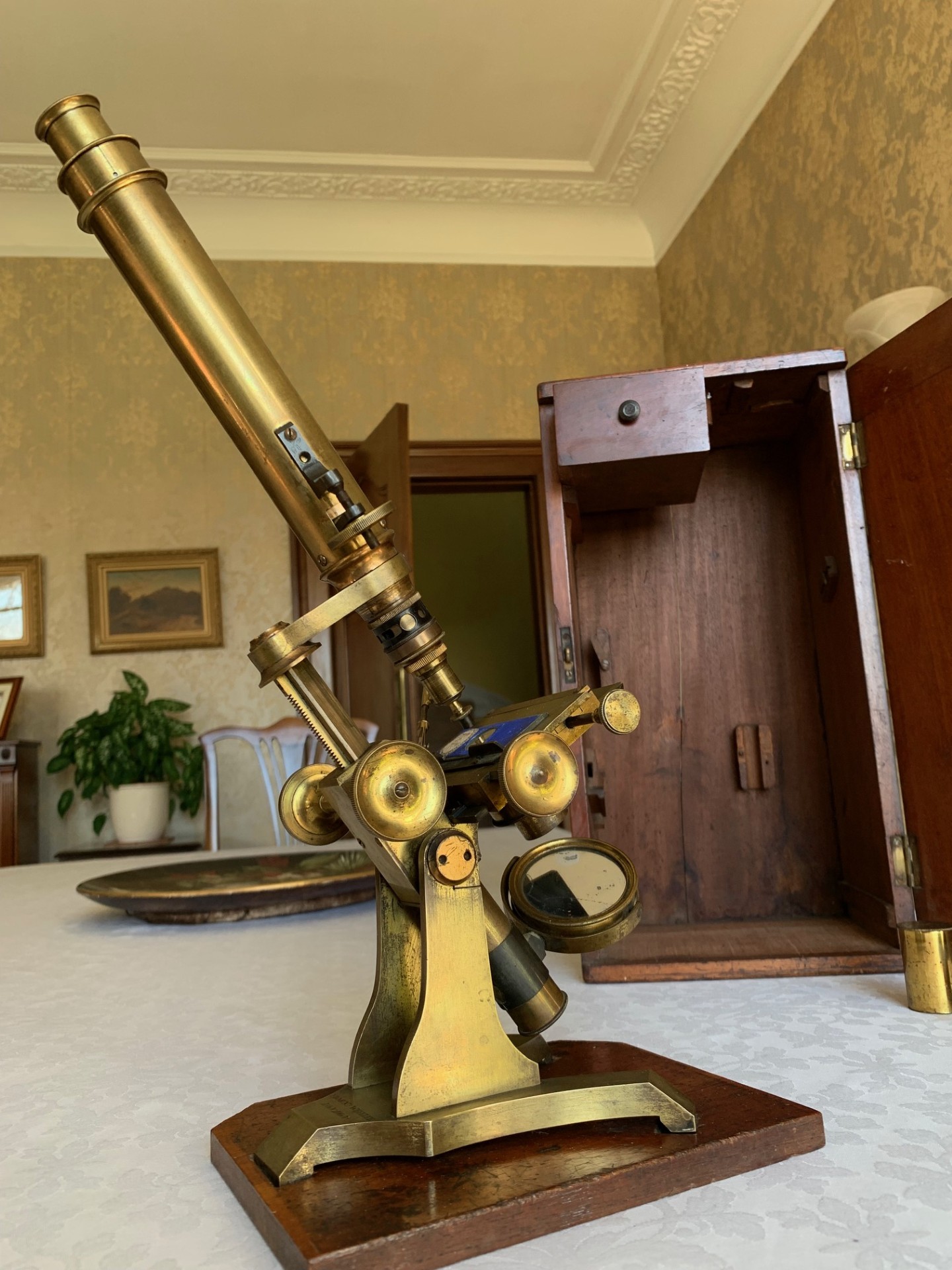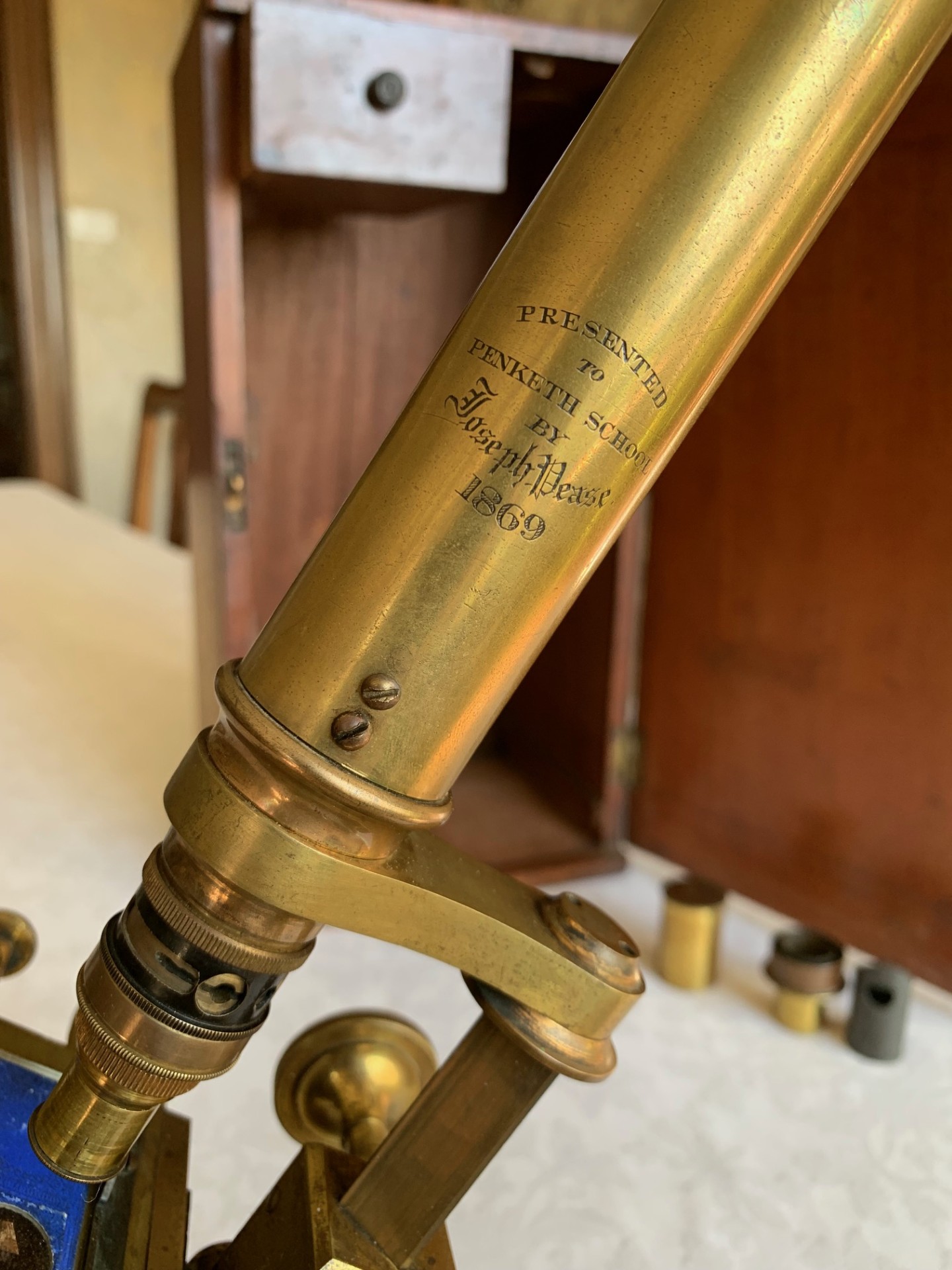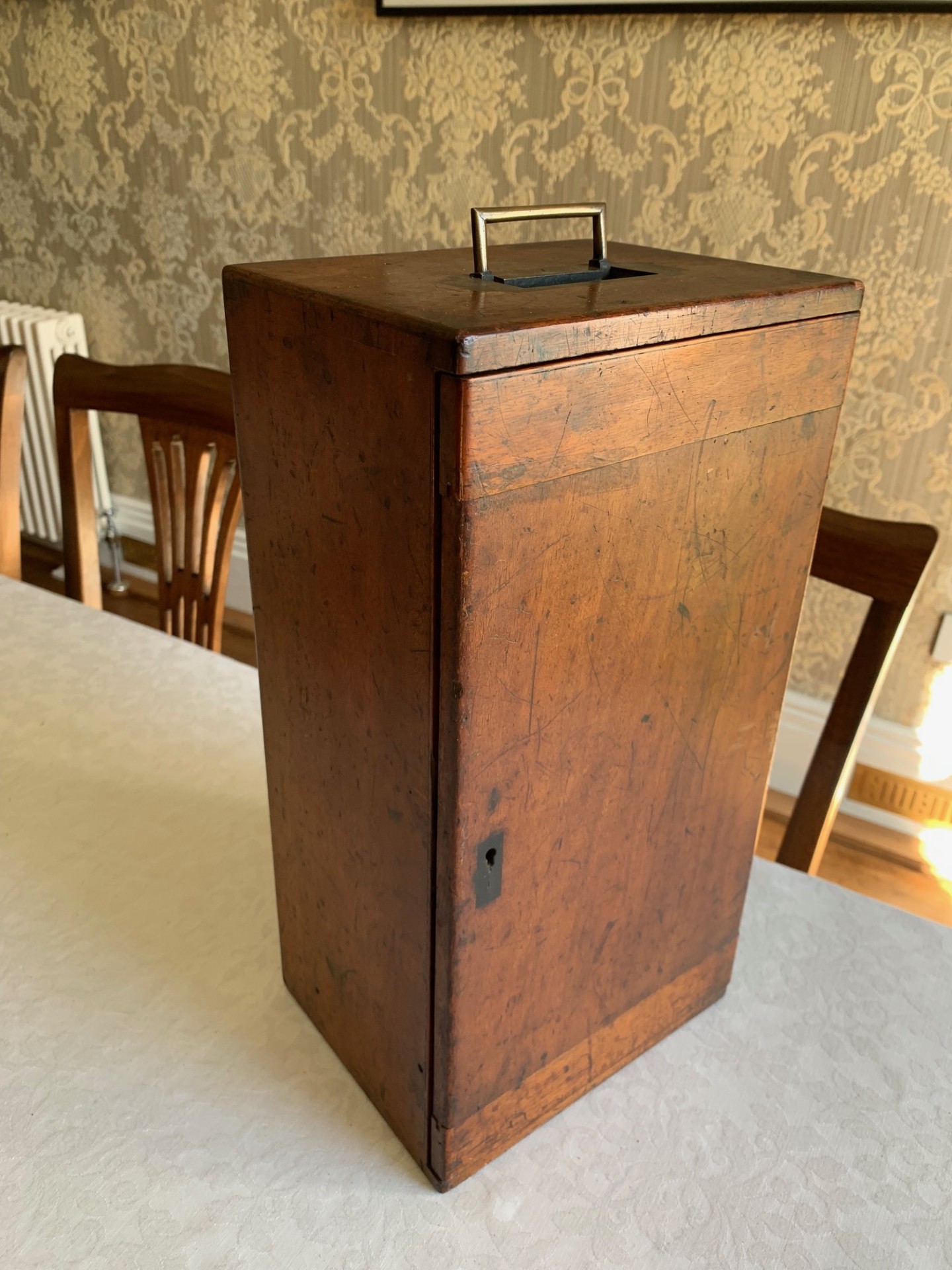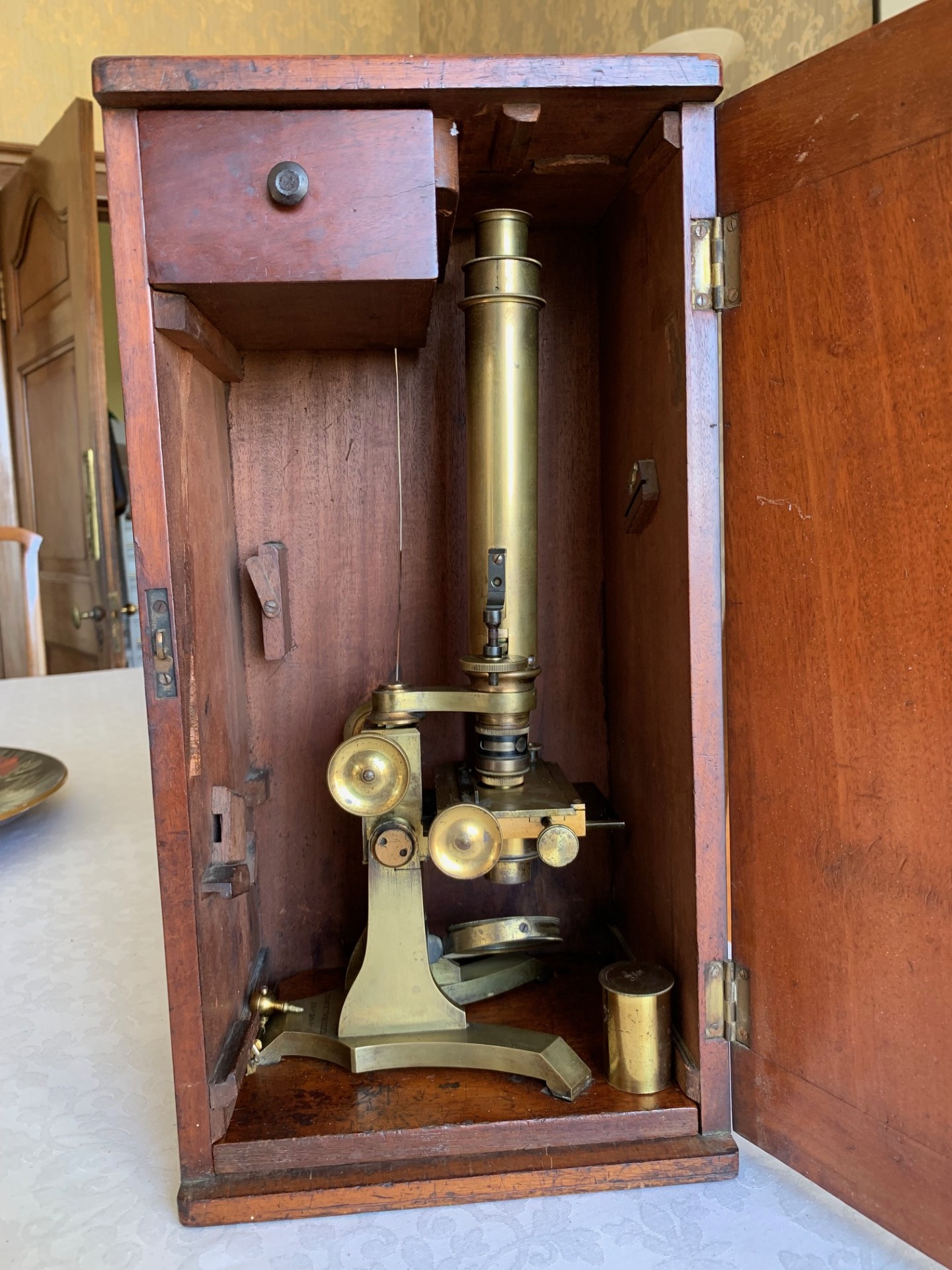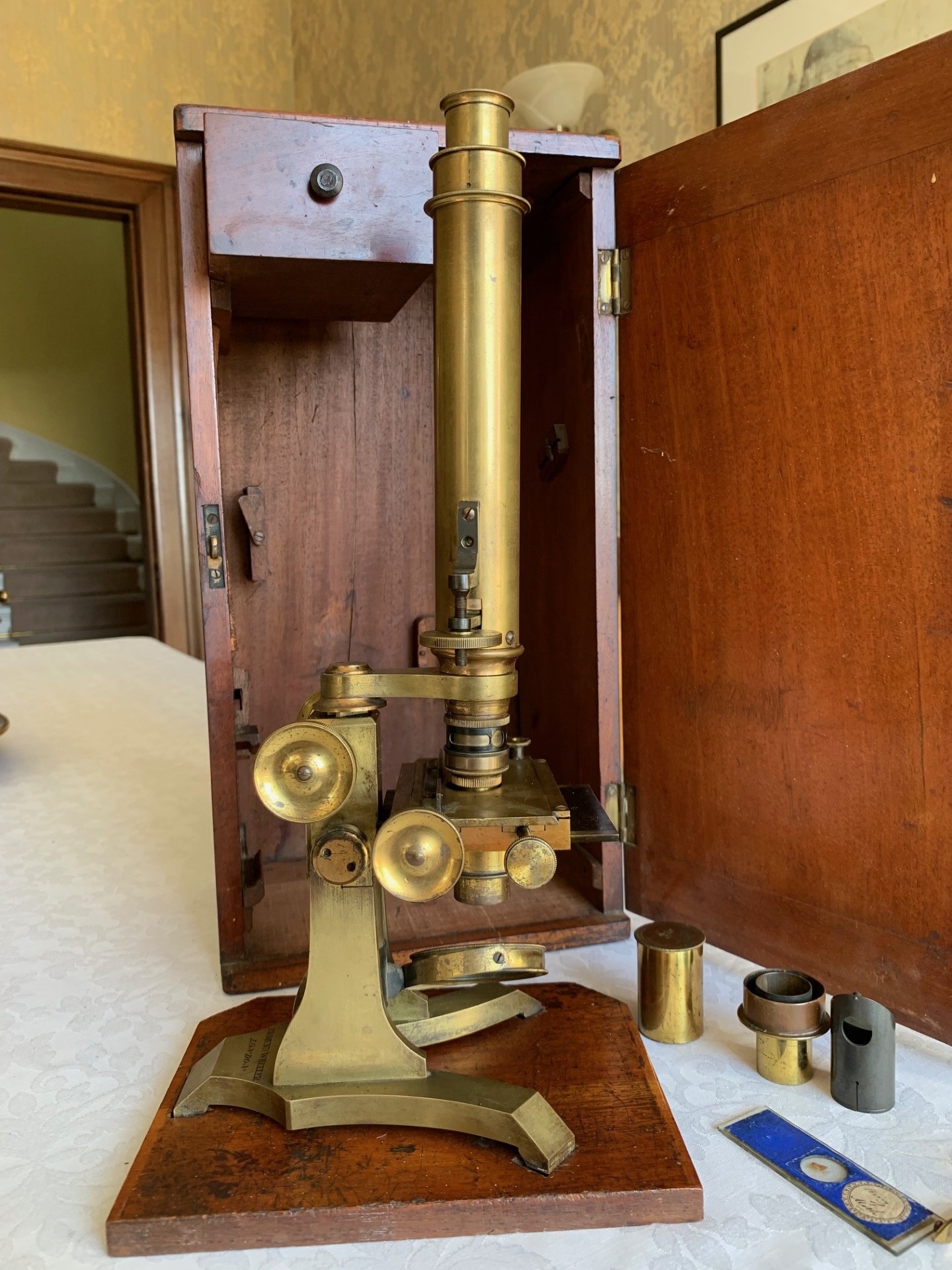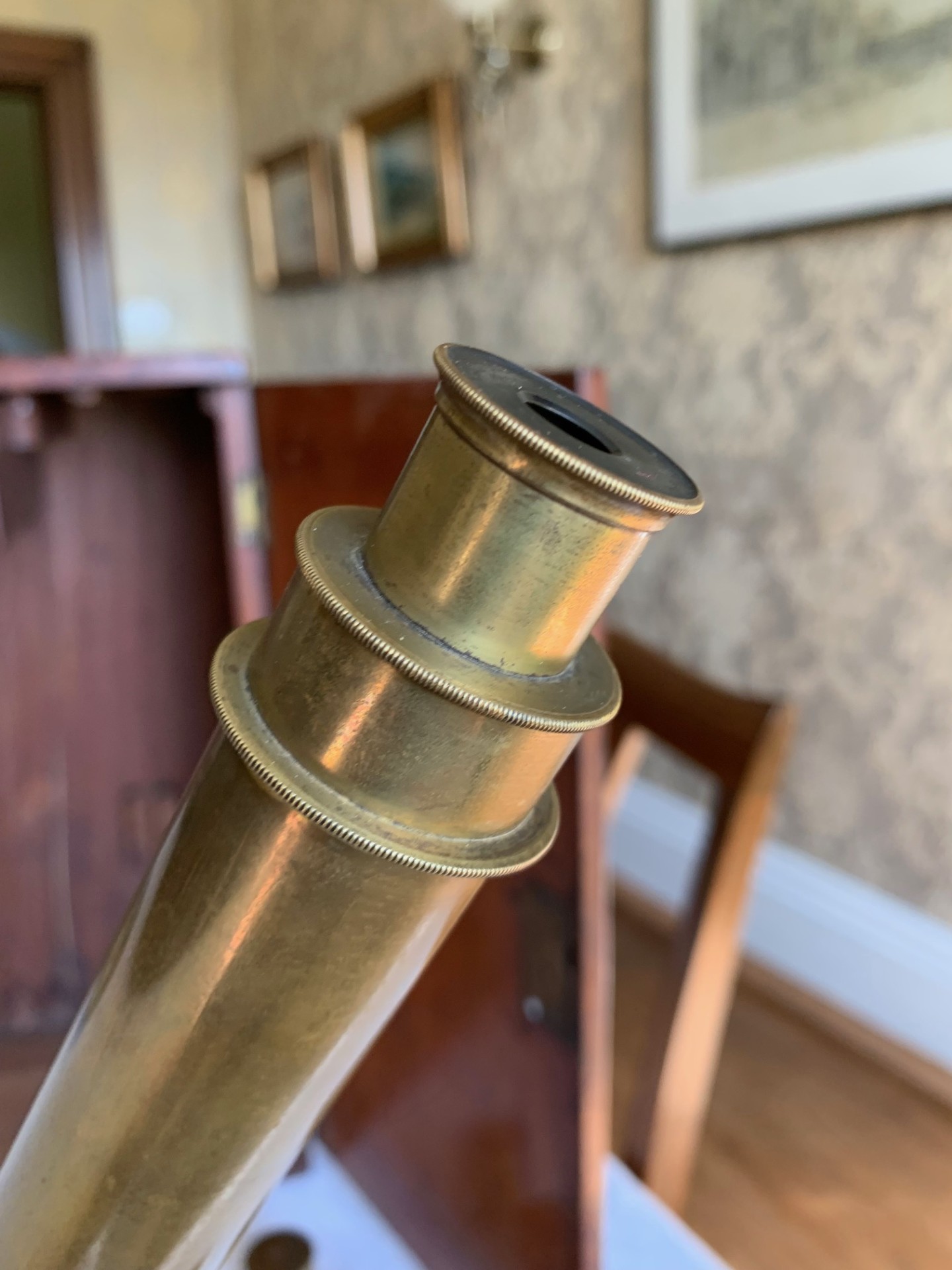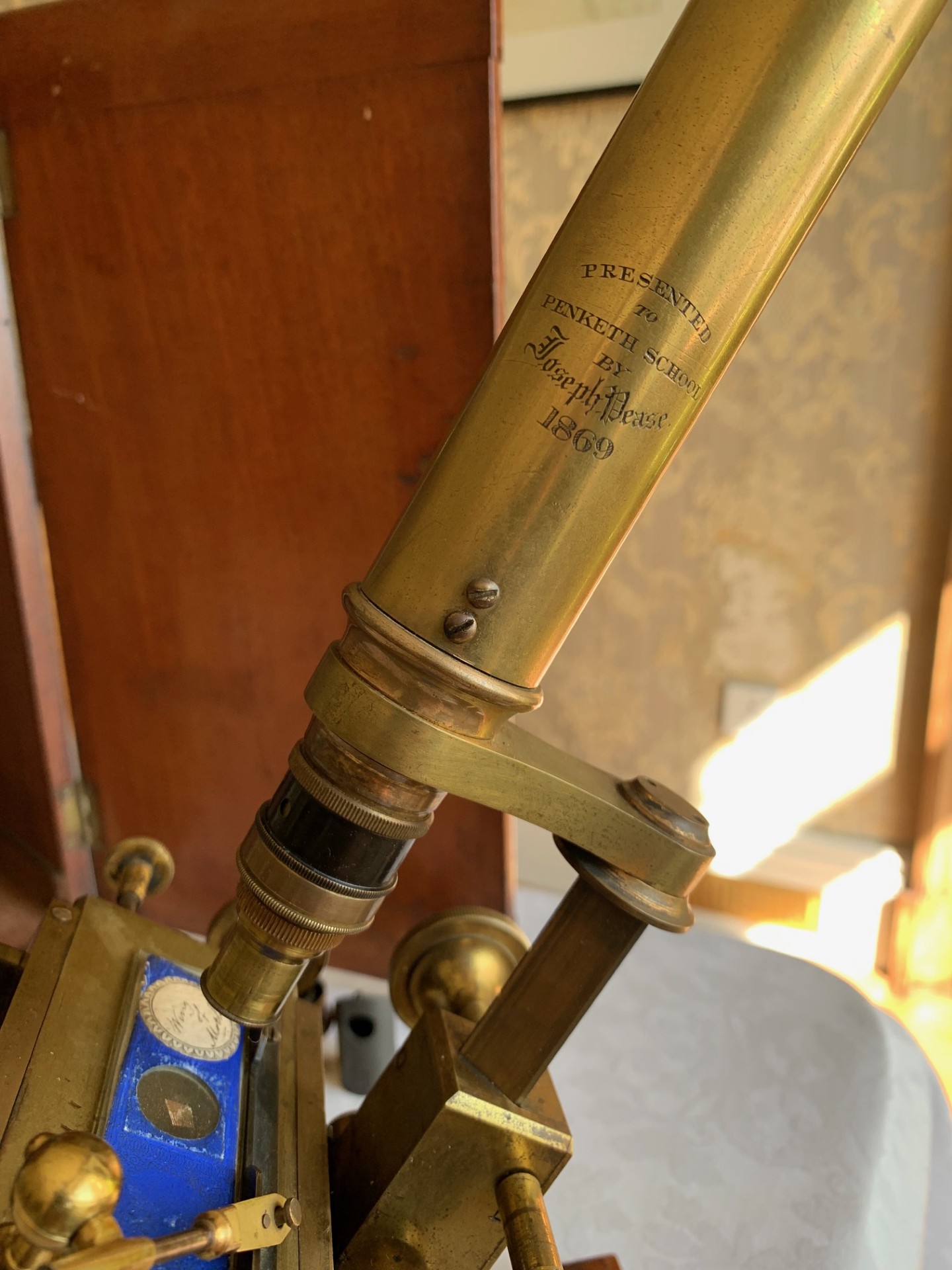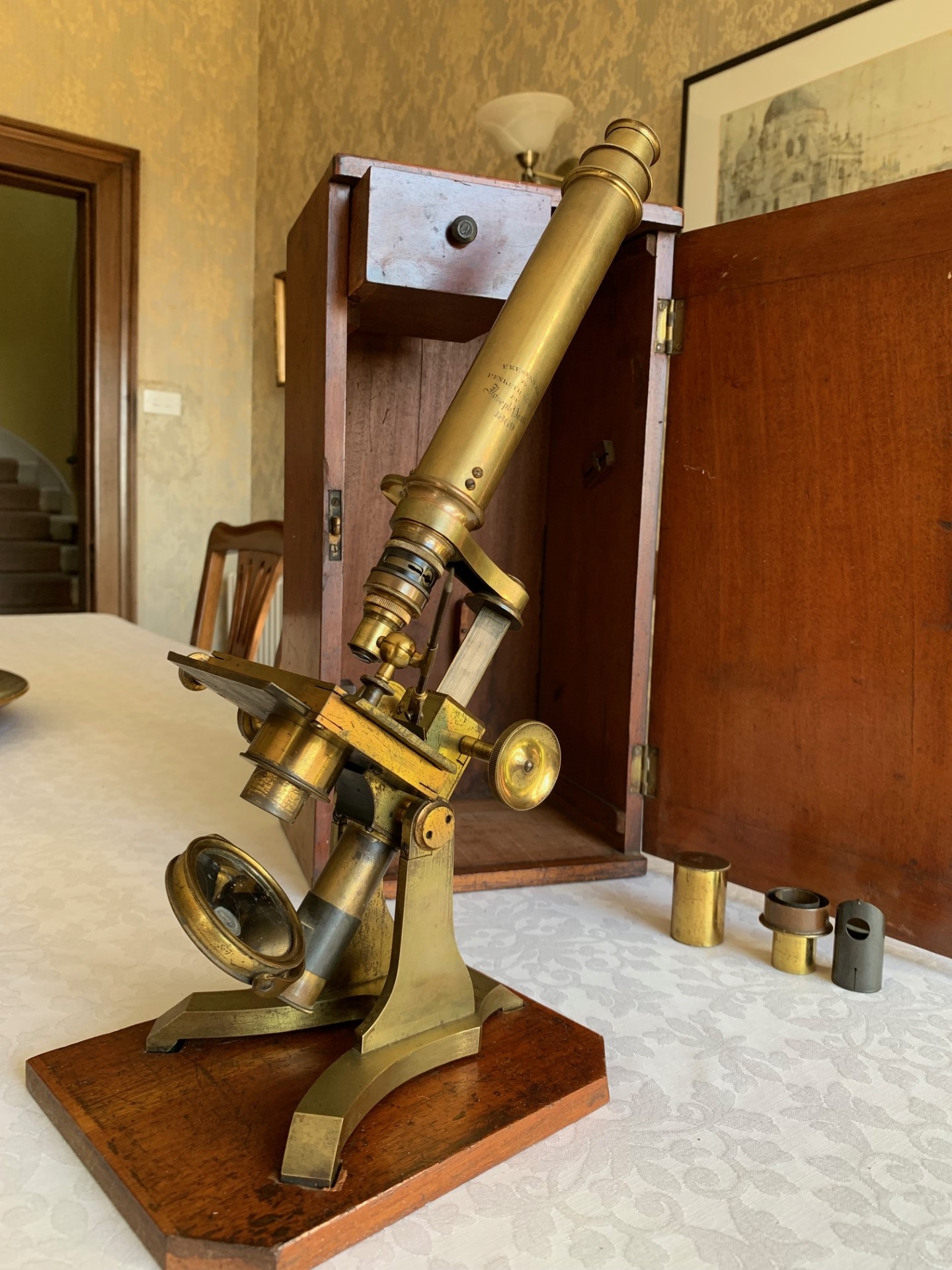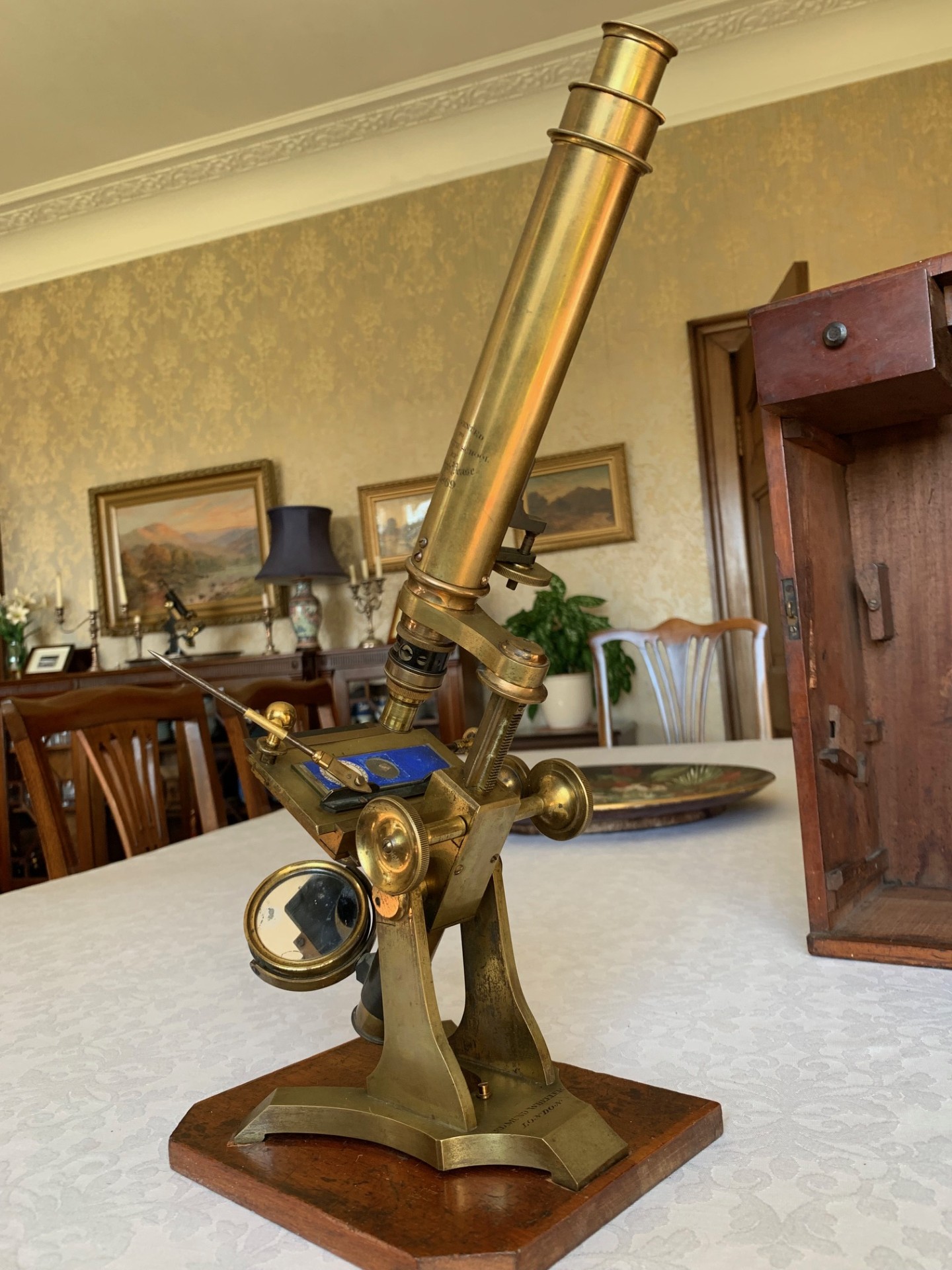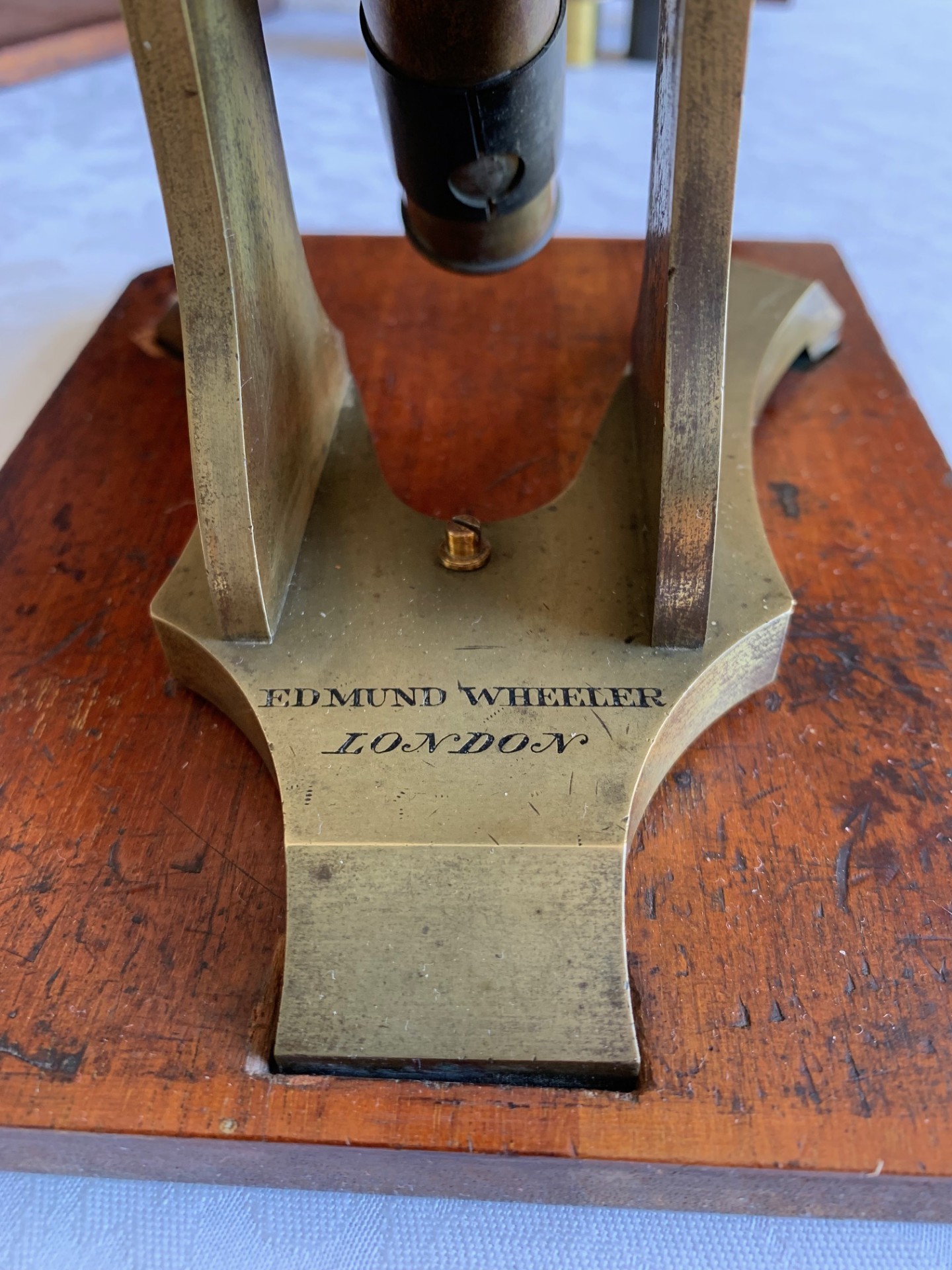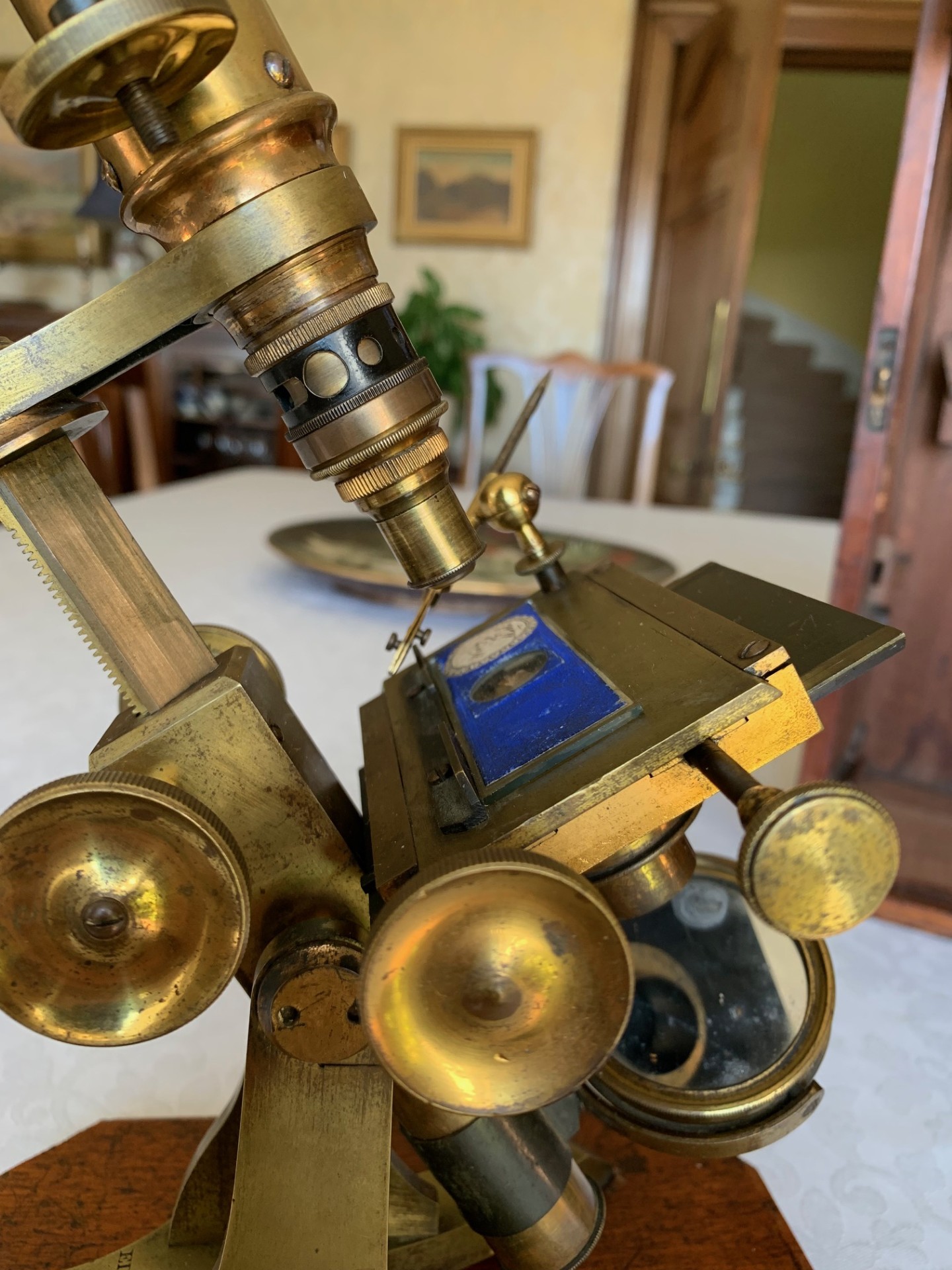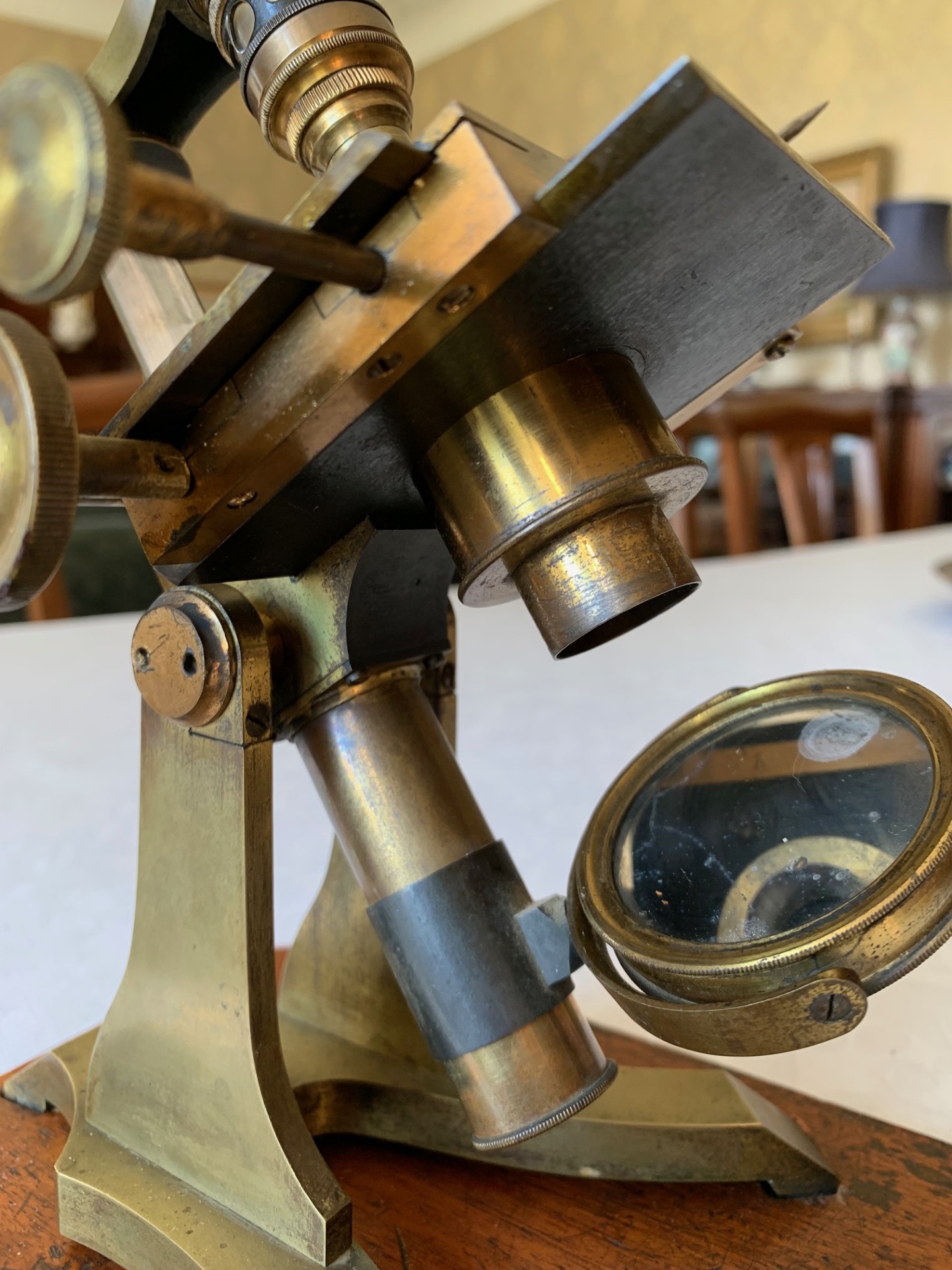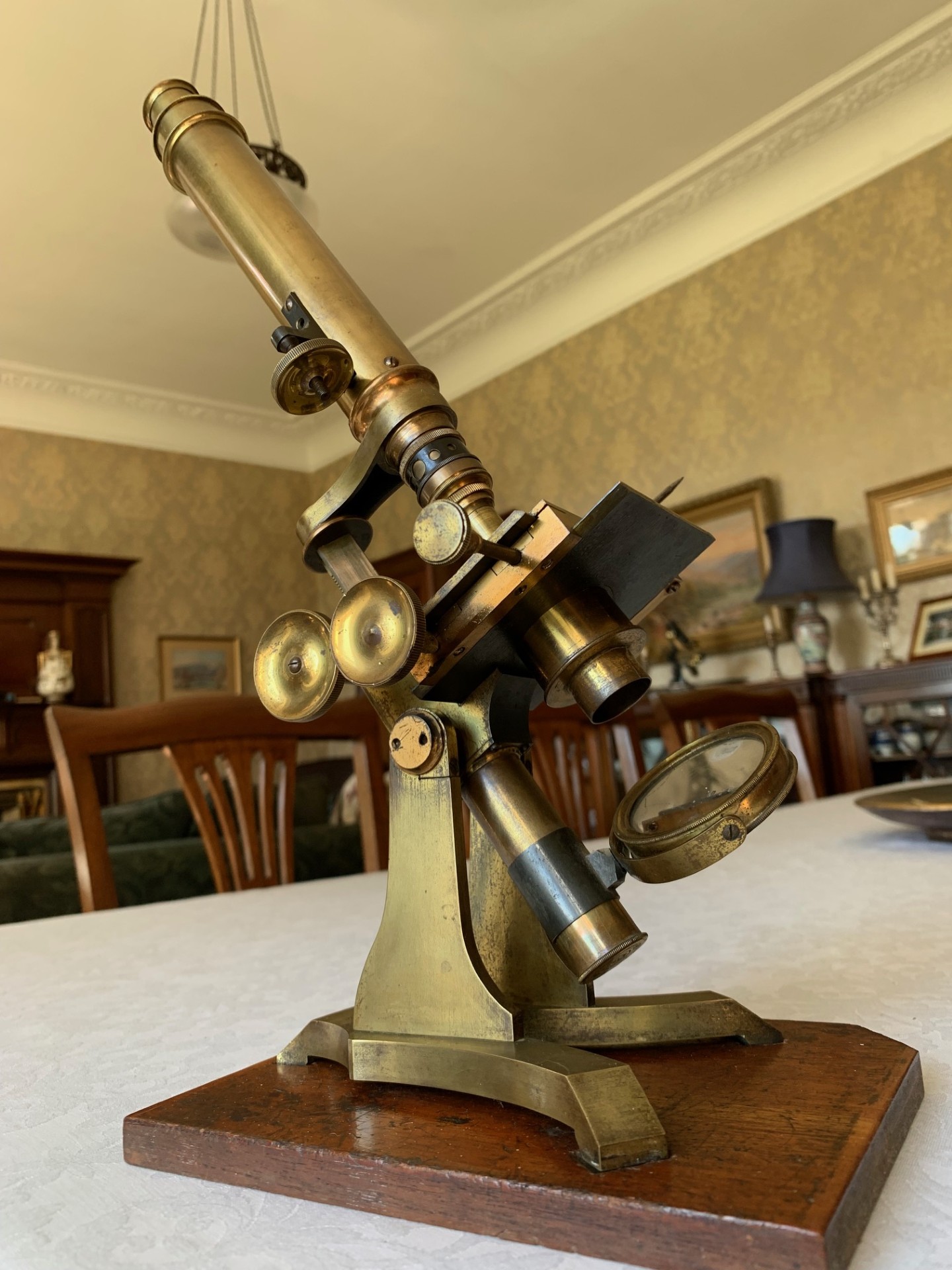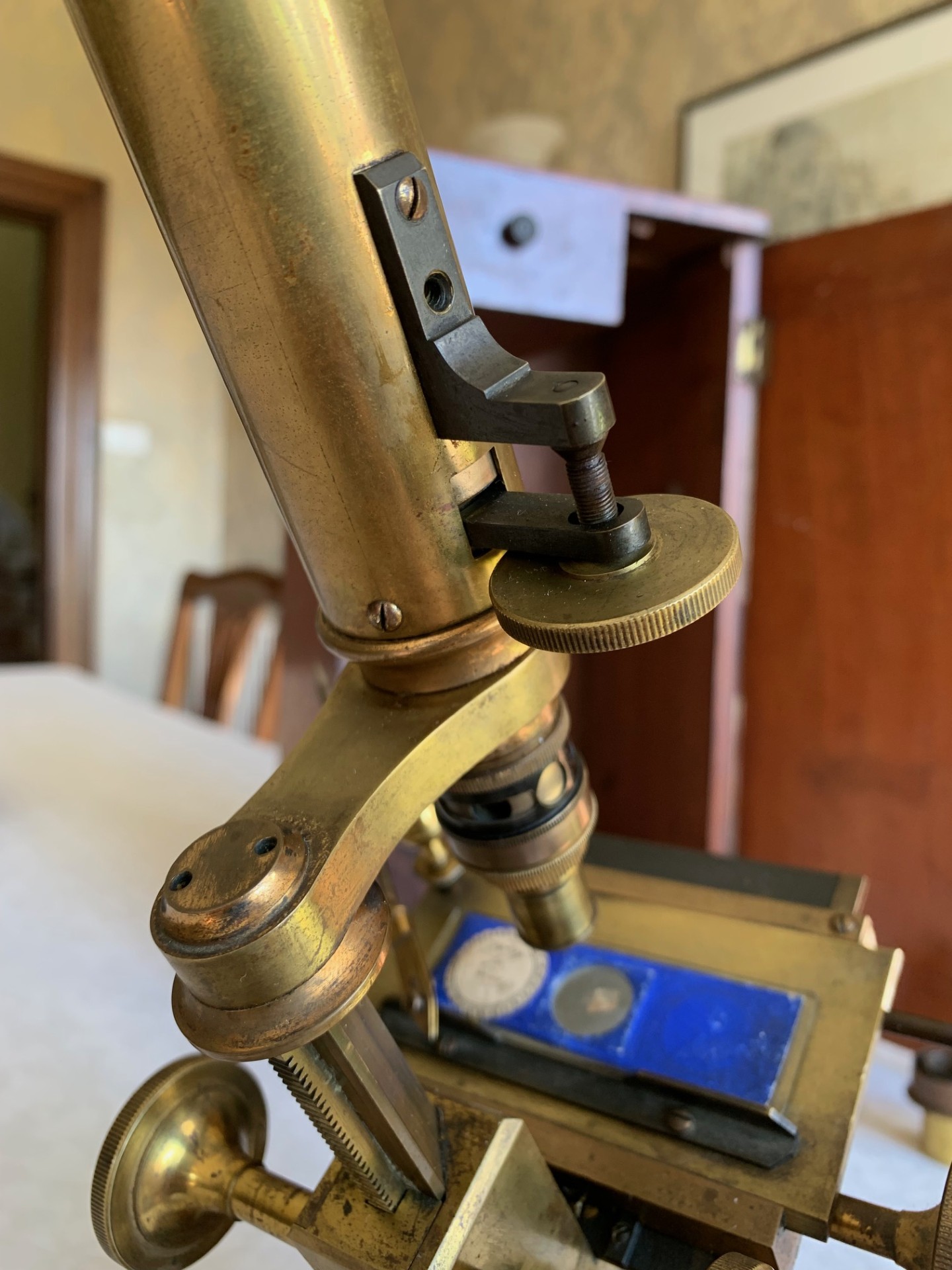SOLD – Antique Brass Bar-limb Educational Microscope – Wheeler of London – c1869, Cased
Sold
Antique condition collectable and probably quite rare monocular instrument by London makers Edmund Wheeler - dating to 1869 and known as the "Educational Microscope". There are a couple of minor condition issues with this instrument as she stands , so please read the listing in full if you're interested in this interesting antique presentation microscope.
Circa
1869
Maker
Edmund Wheeler, London
Country of manufacture
UK and Ireland
Description
Background to Edmund Wheeler (source: Microscope Museum):
Although best known for his high-quality microscope slides, Edmund Wheeler generally described himself as being a science teacher. Coincident with his lecturing, Wheeler initiated a business of producing microscopes, slides, and other optical equipment and supplies. In Wheeler’s 1880 8th List of Microscopic Objects he claimed, “twenty-five years experience in the manufacture of microscopes and microscopic objectives, aided by his son, who occupied for many years an important position in the Manufactory of Messrs. Smith and Beck”. That would give a starting date of 1855. Edmund Jr. turned 19 that year. The 1861 census described the son as a “working optician”, and evidence described below suggests that Edmund Jr. worked for Smith and Beck in that year. Wheeler had developed a serious business in optical instruments and supplies by 1863, in London, and an advertisement issued that year claimed that he had 10,000 prepared microscope slides in stock, along with various types of microscopes, objective lenses, telescopes, and binoculars. Wheeler’s 1869 microscope catalogue illustrated four “first class” and one “educational” stand, and described a dissecting stand, accessories, and a variety of implements. Wheeler claimed that his microscopes undercut others and that his “Educational Model” was the best ever produced at the price. Based on numerous historical documents, Wheeler and his assistants constructed the optical components of their microscopes and telescopes. In the autumn of 1884, dying of tuberculosis, Wheeler sold his business and moved to Brighton, to be with his only surviving child. His son, Edmund Jr., who died in 1930, set up a photography studio in Brighton in 1870 and continued in that business for 40 years.
This example of a Wheeler Educational microscope is in pretty good cosmetic condition for its age and presents well with some gleaming brass-work details, reasonable age-appropriate lacquer finishes and just the right patination here and there that you’d expect, with some losses/wear and evidence of historic polishing in a few places. Cosmetically, it’s survived around 156 years of use and the lacquered brass-work still catches the light as I hope the listing photos demonstrate. The instrument’s look and feel is of a quality not found in modern microscopes in that’s it’s fashioned from brass, giving it a solid feel and despite its modest dimensions, quite an imposing presence when in use with coarse focus racked out.
Technical details – the construction is a cast brass Y-shaped foot with twin uprights supporting a pivot and a classic bar-limb arrangement with triangular-section coarse focus. The coarse focus mechanism is a rack and pinion which works reasonably smoothly and I’ve inspected the horizontally cut rack which is fine with no missing teeth. In operation, this mechanism has quite a smooth action and holds in position as it should through its working range. Fine focus is via a brass thumb-wheel re-positioned to the side of the optical tube, being a vernier screw acting on the sprung nose-piece only, which works well.
In terms of its optics, this microscope is supplied with a single top-hat brass eyepiece, giving nice bright images and will be about 6x magnification.
It’s also got two period objective lenses which are RMS so must be a later modification – they screw directly into the optical tube one by one. The objectives are:
– 2/3rd inch which will be 10x magnification
– 21x magnification button objective
The range of magnification available will therefore be 60x to 126x with the current set of optics.
I’ve tested the optics with various antique slides of insect and animal specimens and the images are perfectly acceptable and sharp when using good illumination.
The instrument tilts for inclined viewing and holds in position through its working range and can be adjusted/tightened at the pivot as necessary. The rectangular brass specimen stage is mechanical and fitted with a rest/ledge for positioning slides which works quite well. There’s x/y axis adjustment thumb-wheels which work, although the x-axis thumb-wheel will be a later replacement with an under-sized thumb-wheel, which only has a limited range of movement, but still functional with care.
There’s a technical sub-stage comprising a brass mount fitted with a fixed aperture insert. Lighting is via a plano-concave mirror in a gimbal mount with slider attaching it to the instrument’s brass tail-piece. The mirror can be adjusted for height/rotation in addition to its gimbal rotation.
The instrument has been very lightly lubricated with non-hardening grease as necessary, so that the controls operate smoothly. This example displays well and actually has quite a presence with its patinated lacquer finishes completing the period look. Overall, this example of a Wheeler Educational bar-limb instrument while still being usable, could also make quite a statement display piece, perhaps in a library or home office type of setting, when set up with an appropriate antique slide.
Accessories:
– additional sub-stage plug-in aperture
– angled sub-stage illuminator
– set of stage forceps
There’s also the original storage case with this instrument with internal drawer and lock but with key missing. There’s also a shrinkage crack to the rear panel, but overall the case is in decent period condition. There’s also a recessed brass carry-handle.
Owing to the weight and delicacy of this antique microscope, it will be partially dismantled, carefully wrapped for shipping and dispatched by insured courier upon receipt of cleared funds.
Thanks for looking.
Ask the Dealer
Dealer information
 Arcboutant Scientific
Arcboutant Scientific
Howard Nutton based in Glasgow Scotland with a background in Natural Science along with previous career in risk management. I obtained my first antique microscope in 1988 - it was a Watson Edinburgh model H serial number 23604 - dating it to 1918. Since that time I've owned and restored hundreds of similar instruments. As Arcboutant Scientific now also making available personally curated fine examples, principally of antique microscopes and associated scientific equipment by quality English and Continental makers, to collectors world-wide.




